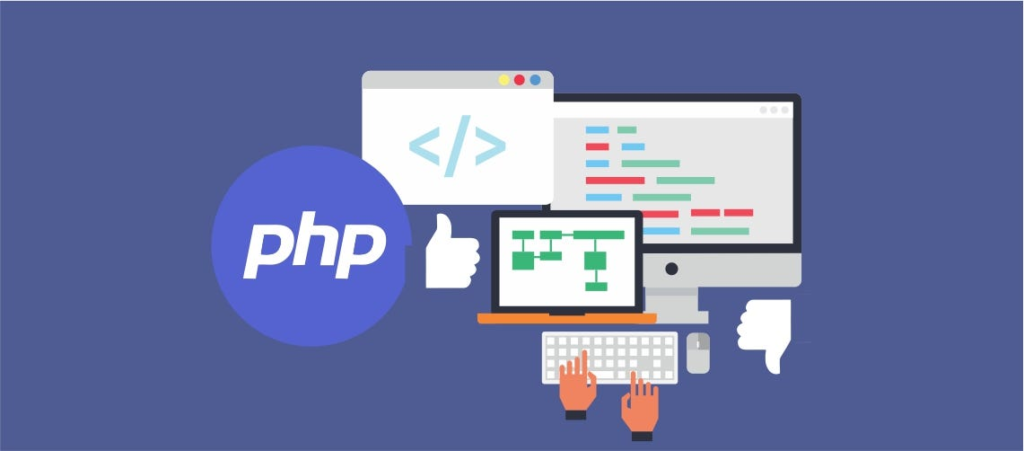
When it comes to modern web development, there are numerous tools and technologies that developers rely on to create dynamic, responsive, and efficient websites.
One of the lesser-known yet highly effective frameworks gaining popularity is PHP Bamboo. This guide will explore what PHP Bamboo is, its features, advantages, and how you can incorporate it into your web development projects.
Whether you’re a beginner or someone looking to expand your knowledge in web development, this article will provide a humanized, easy-to-read overview, optimized for search engines and accessible to a U.S. audience.
What is PHP Bamboo?
PHP Bamboo is a powerful framework for PHP (Hypertext Preprocessor), designed to help developers build dynamic websites and web applications more efficiently.
It integrates several essential tools, libraries, and features that streamline the development process.
By simplifying complex coding tasks, PHP Bamboo enables developers to focus more on creative and functional aspects of their projects.
PHP Bamboo is particularly beneficial for creating scalable, robust, and easy-to-maintain web applications.
It offers an easy learning curve for beginners and an efficient workflow for professionals, making it a popular choice for developers across the globe.
Also Read: The Ultimate Guide to Understanding “/Portal.PHP” – Everything You Need to Know
Key Features of PHP Bamboo
To fully understand PHP Bamboo’s potential, it’s essential to examine its key features. These include:
1. Modular Structure
PHP Bamboo follows a modular structure that allows developers to include only the necessary components in their applications.
This modularity ensures better code organization, improved readability, and easier maintenance.

2. Pre-built Libraries and Tools
PHP Bamboo comes with a collection of pre-built libraries and tools that automate repetitive tasks, such as handling form validation, database connections, and user authentication.
This saves developers time and effort, allowing them to focus on building the unique features of their applications.
3. Security Features
One of the most crucial aspects of any web framework is its security. PHP Bamboo includes built-in security measures like input sanitization, session management, and encryption protocols.
These features help protect web applications from common security threats, including cross-site scripting (XSS) and SQL injection attacks.
4. Templating System
PHP Bamboo’s templating system allows developers to separate the presentation layer from the business logic.
This means that developers can design user interfaces without having to worry about the underlying code, enhancing both development speed and ease of collaboration.
5. Routing and URL Management
PHP Bamboo provides an intuitive routing system for managing URLs and redirecting traffic.
This makes it easier for developers to manage different parts of their applications, handle URL parameters, and create search-engine-friendly URLs.
6. Database Integration
Another advantage of PHP Bamboo is its seamless integration with various databases.
Developers can easily connect to MySQL, PostgreSQL, SQLite, and other popular database management systems, ensuring that their applications run smoothly and can handle large volumes of data.
How Does PHP Bamboo Compare to Other PHP Frameworks?
PHP Bamboo stands out for several reasons. Compared to other popular PHP frameworks like Laravel, Symfony, and CodeIgniter, PHP Bamboo offers a balance between simplicity and functionality.
Below is a comparison to help you understand where PHP Bamboo fits into the PHP ecosystem.
PHP Bamboo vs. Laravel
While Laravel is one of the most widely used PHP frameworks, PHP Bamboo offers a more lightweight and minimalistic approach.
Laravel comes with a wealth of features, but it can sometimes be overwhelming for beginners.
On the other hand, PHP Bamboo is ideal for those who prefer a streamlined, easy-to-understand framework without sacrificing functionality.

PHP Bamboo vs. Symfony
Symfony is known for being highly flexible and customizable, making it suitable for large-scale applications.
However, its complexity can be daunting for new developers. PHP Bamboo offers a more beginner-friendly alternative while still providing enough power for professional developers.
PHP Bamboo vs. CodeIgniter
CodeIgniter is a great choice for developers who want a small footprint and a quick setup.
However, it lacks some of the modern features and security protocols that PHP Bamboo offers.
PHP Bamboo provides a better combination of simplicity, security, and modularity, making it a more versatile option.
Also Read: Prince Narula Digital PayPal_ A Secure and Reliable Payment Solution
Advantages of Using PHP Bamboo
Now that we understand the features and comparisons of PHP Bamboo, let’s explore the advantages it offers to developers and organizations.
1. Faster Development Time
With its pre-built libraries, intuitive templating system, and built-in security features, PHP Bamboo enables faster development cycles.
Developers can build complex web applications in less time, allowing them to meet deadlines and deliver high-quality results.
2. Improved Code Maintenance
PHP Bamboo’s modular structure and clean code organization make maintaining and updating code much easier.
When working on large-scale applications, you can quickly identify and fix bugs or add new features without disrupting the rest of the codebase.
3. Beginner-Friendly
PHP Bamboo is designed with beginners in mind. It has a simple, easy-to-understand syntax, making it accessible to those just starting with PHP development.
The modular approach also helps new developers learn how different components of an application work together.
4. Strong Community Support
Although PHP Bamboo is relatively new compared to other frameworks, it has a growing community of developers.
This means that you can access forums, tutorials, and other resources to help you overcome any challenges you face during development.

5. Scalability
As your web application grows, PHP Bamboo can scale with it. Whether you’re building a small blog or a large enterprise-level application, PHP Bamboo’s architecture ensures that your application can handle increased traffic and data storage needs.
How to Get Started with PHP Bamboo
If you’re ready to dive into PHP Bamboo and start using it for your projects, follow these simple steps:
1. Installation
PHP Bamboo is easy to install. You can download the framework from its official website or GitHub repository.
Once downloaded, you can extract the files and set up the framework on your local server or development environment.
2. Configuration
After installation, you’ll need to configure your environment. This typically involves setting up your database connections, configuring routing, and specifying other important settings.
PHP Bamboo provides detailed documentation to guide you through this process.
3. Building Your First Application
Once your environment is set up, you can start building your application. Begin by creating routes, designing your database structure, and implementing the core features of your project.
Use PHP Bamboo’s templating system to design your user interface and test everything to ensure your application runs smoothly.
FAQs About PHP Bamboo
Q1: What is PHP Bamboo used for?
PHP Bamboo is a framework designed for web development with PHP. It helps developers create dynamic websites and web applications by offering pre-built libraries, security features, and a modular architecture.
Q2: How does PHP Bamboo compare to other PHP frameworks?
PHP Bamboo is more lightweight and beginner-friendly than other popular PHP frameworks like Laravel and Symfony.
It provides essential features without overwhelming new developers, making it a great choice for both beginners and experienced developers.
Q3: Is PHP Bamboo secure?
Yes, PHP Bamboo includes built-in security features such as input sanitization, session management, and encryption protocols to protect web applications from common threats like SQL injection and cross-site scripting.
Q4: How do I install PHP Bamboo?
To install PHP Bamboo, simply download the framework from its official website or GitHub repository, extract the files, and configure it for your local development environment.
Detailed documentation is available to guide you through the installation process.
Q5: Can PHP Bamboo handle large-scale applications?
Yes, PHP Bamboo is highly scalable. It is designed to handle large volumes of traffic and data, making it suitable for both small and large-scale web applications.
Conclusion
PHP Bamboo is a versatile and beginner-friendly framework that offers a streamlined approach to PHP development.
It provides developers with essential tools, libraries, and features that simplify the process of building dynamic and secure web applications.
Whether you’re a beginner or a seasoned developer, PHP Bamboo can help you create scalable, efficient, and maintainable applications.
By understanding its key features and advantages, you can confidently incorporate PHP Bamboo into your next web development project.
With this comprehensive guide, you now have the knowledge to get started with PHP Bamboo and explore its full potential for web development. Keep practicing, and happy coding!